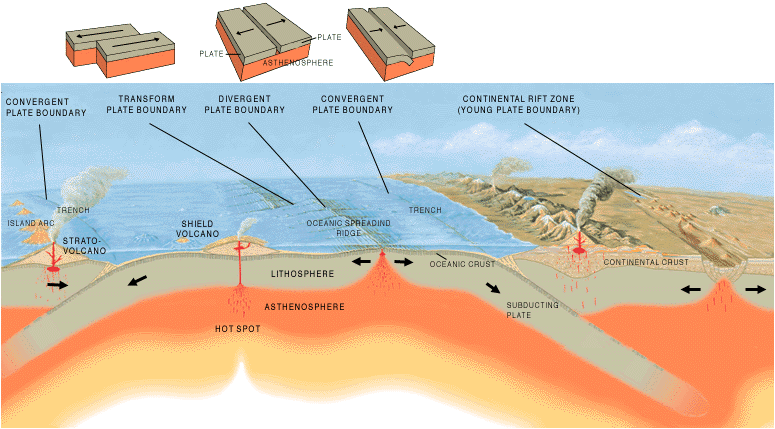This is my google slide presentation. (I couldn't get a picture of my model)
Summary
In this project we had to research about a landform, then create a model and presentation about it. The landform I chose to do my project on is Fernandina Island. I worked with 2 other classmates. Fernandina Island is an active shield volcano located in Ecuador, South America. It is part of the Galapagos islands. A shield volcano is the flattest type of volcano. Also, it's lava has little viscosity due to low silica content. The last eruption was in 2009. Fernandina Island was formed by a divergent boundary and the Galapagos Hotspot (Fernandina Island is located in the center). When the Nazca and the Pacific plate moved apart, the magma from the Galapagos Hotspot went through and Fernandina started to form in the Pacific Ocean.
Background
What process did you go through to produce this piece?
In this project, my group and I had to create 2 different components. A ignite presentation and a model of our landform.First, we had to research for our presentation. After we researched everything we started to develop our presentation. Halfway through developing the presentation, we realized that we needed a script for when presenting. Because of that, instead of working on our google slide, we first wrote a script. Next, we completed our google slide presentation. Over the weekend, we met up at my house to create our model. Since our model was a rice Krispie model, we had to first make the rice Krispies block to carve. When our block of rice Krispies was done, we carved it into our island and covered it with fondant ( we rolled and kneaded in the color ourselves) to give it color. For the rest of the time, we practiced presenting and memorizing our script.
Inward:
What did/do you find frustrating about it?
One thing I found frustrating during this project was creating the model. Specifically, not having all of our team members there to create the model. My teammates and I were supposed to all meet up at my house to create the model but for some reason, one of them came late and knocked on the door too quietly. Yeah, someone came a little late and knocked on the door too quietly so they weren't let in. By the way, the doorbell looked broken but actually worked so they didn't bother trying to use the doorbell. That was both of our faults. We should have been listening more intently and the other person should have knocked louder or at least tried to use the doorbell.Outward:
If someone else were looking at the piece, what might they learn about who you are?
If someone else were looking at my model, they might learn that I love sweets. This is because the model we made is made out of rice Krispie treats. Yum! Also, they might learn that I like to make and try different and new things. I have never made rice Krispie treat model in my life (though I have made a cake model).
If someone else were looking at my presentation, they might learn that I like to design things. This is because when you look at the presentation, you can see how different fonts were chosen specifically for different headings. You might also notice some of the pictures are edited (like how I changed the background to a black and white picture of the island).
Forward:
One thing I would like to improve upon is ...
One thing I would like to improve on is completely memorizing the script. This is so the presentation goes more fluently and so I know the information better. If my group memorized the script, then we would also get a better score on the google form that groups had to fill out while people presented.
